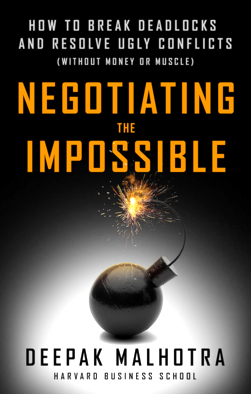
From the Introduction
The Most Ancient Lesson in Peacemaking
Among the oldest peace treaties in history is the Treaty of Kadesh, which was negotiated between the Egyptian and Hittite empires over three thousand years ago, in the middle of the 13th century B.C.E. With neither party willing to continue incurring the costs of war, and with each side wary of looming conflict with its other neighbors, Pharaoh Ramesses II and King Hattusili III sought to negotiate an end to the conflict. Such attempts are difficult not only because the issues at stake may be contentious or complex, but because, often, neither side wants to make the first move. The side that comes asking for peace may look weak rather than wise or magnanimous, a signal that no leader can afford to send. And yet, a deal was reached. Despite having been drafted thousands of years ago, the treaty has many of the hallmarks of more recent agreements, including provisions proclaiming the end to conflict, the repatriation of refugees, an exchange of prisoners, and a mutual assistance pact if either side was attacked by others.
One other characteristic makes their accord similar to what we often see today—in peace treaties, commercial agreements, and successful efforts at resolving conflicts ranging from international disputes to arguments between spouses. This feature is only apparent in the Treaty of Kadesh because it was recorded in two languages: hieroglyphics (the Egyptian translation) and Akkadian (the Hittite translation). A comparison of the translations reveals that the two versions are, as we ought to expect, very similar. But there is at least one important difference. The Egyptian translation states that it was the Hittite’s who came asking for peace terms. The Hittite version claims exactly the opposite.
When it comes to deal-making, diplomacy and resolving disputes, it does not matter which culture you examine or what kind of negotiation you investigate. It does not matter why people were fighting or why they chose to settle their differences. Some things never change: the need for all sides to declare victory is at least as old as recorded history itself.
The Treaty of Kadesh also exposes a more fundamental insight about negotiation and peacemaking—and one that lays the foundation for this book:
Even seemingly impossible deadlocks and conflicts can be resolved if we shed the assumption that our only sources of leverage are money and muscle.
This is especially important to keep in mind when you are dealing with a situation that seems hopeless. When even your most generous offers are being rejected, when your well-intentioned attempts at addressing the issues are being thwarted, and when you have little power with which to impose a solution, you need a different approach and other sources of leverage. This book provides such an approach and reveals those sources of leverage.
